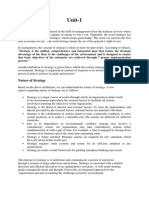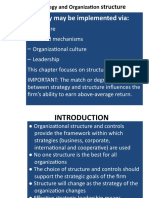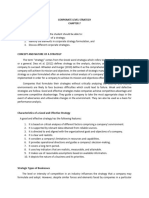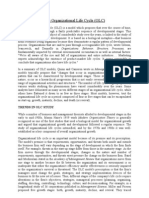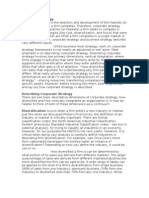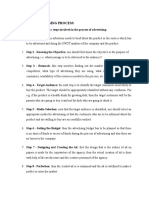0% found this document useful (0 votes)
41 views1 pageStrategy and Structure Evolution
Stage 1 organizations are small businesses managed by a single owner-entrepreneur who makes all decisions and directly oversees daily operations. Stage 2 organizations grow larger requiring group management as one person can no longer handle everything. Stage 3 consists of larger single-business organizations operating across a wide geographical area through decentralized units following corporate policies but tailored to local needs. Stage 4 includes large, diversified companies with business units decentralized by line of business and each headed by a general manager with profit responsibility across functions.
Uploaded by
Sukesh RCopyright
© © All Rights Reserved
We take content rights seriously. If you suspect this is your content, claim it here.
Available Formats
Download as DOCX, PDF, TXT or read online on Scribd
0% found this document useful (0 votes)
41 views1 pageStrategy and Structure Evolution
Stage 1 organizations are small businesses managed by a single owner-entrepreneur who makes all decisions and directly oversees daily operations. Stage 2 organizations grow larger requiring group management as one person can no longer handle everything. Stage 3 consists of larger single-business organizations operating across a wide geographical area through decentralized units following corporate policies but tailored to local needs. Stage 4 includes large, diversified companies with business units decentralized by line of business and each headed by a general manager with profit responsibility across functions.
Uploaded by
Sukesh RCopyright
© © All Rights Reserved
We take content rights seriously. If you suspect this is your content, claim it here.
Available Formats
Download as DOCX, PDF, TXT or read online on Scribd
/ 1


















